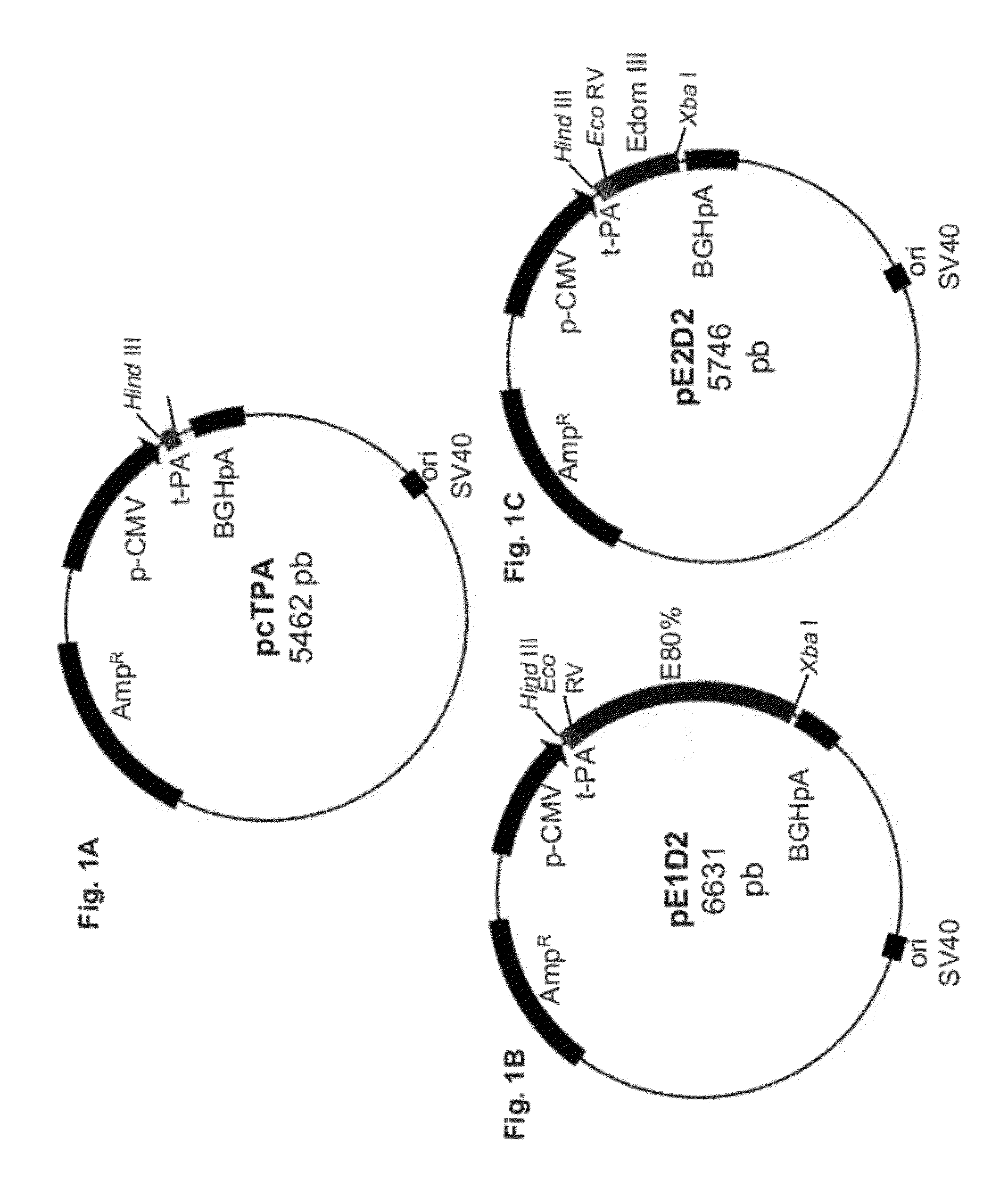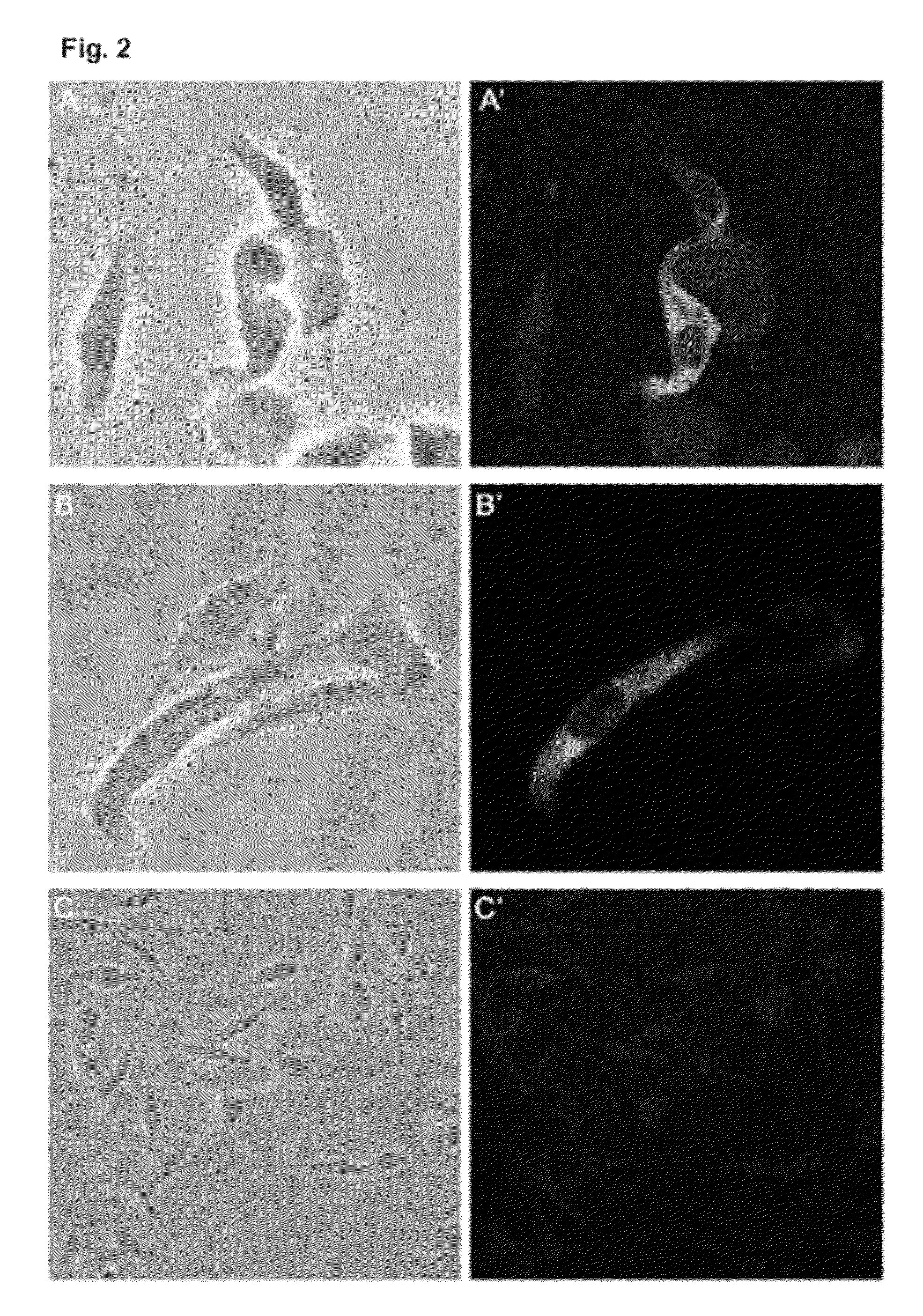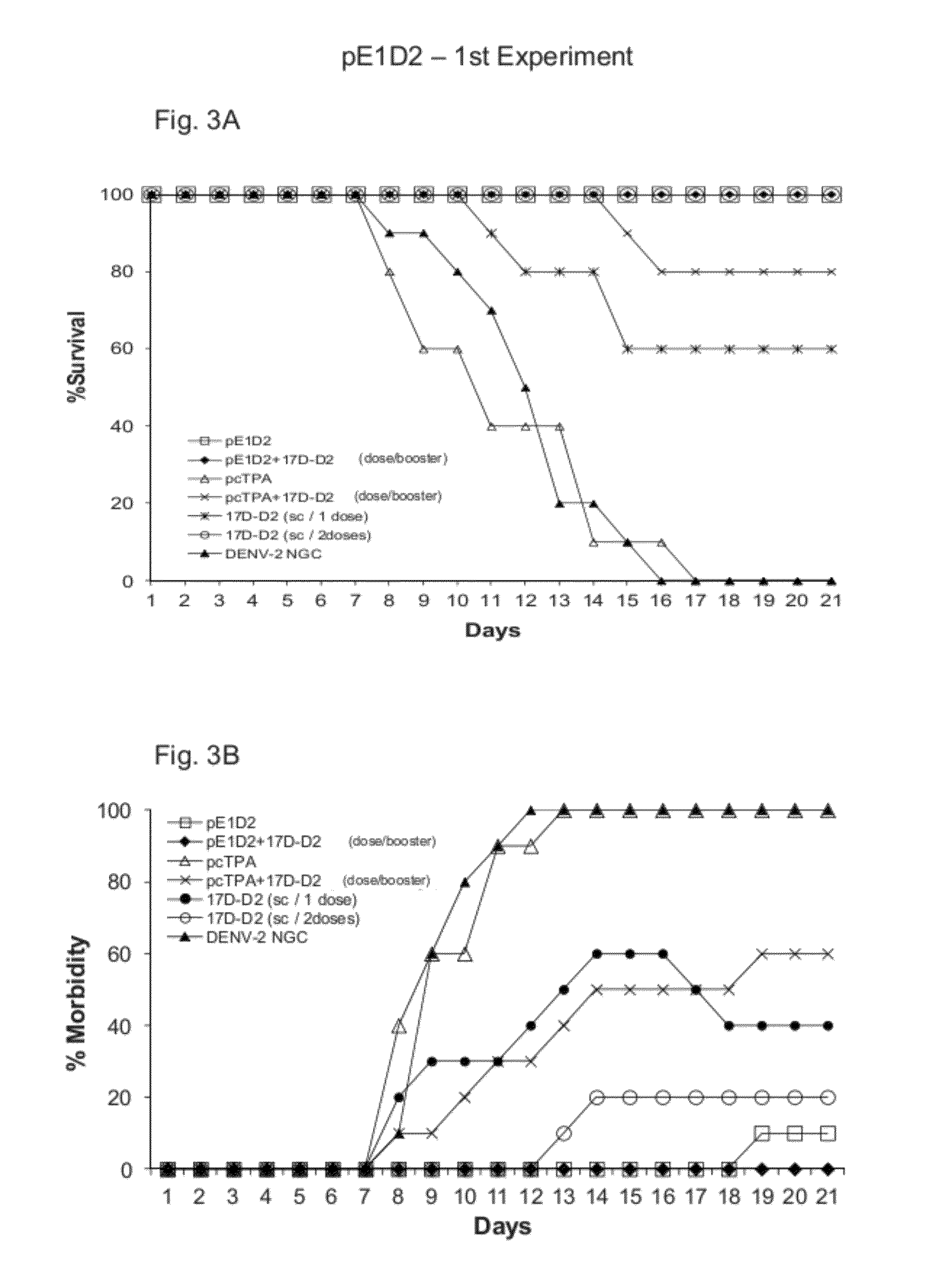Method, kit, plasmid and composition for inducing an immune response to dengue virus, on the basis of DNA and chimeric virus vaccines
a technology of dengue virus and kit, applied in the field of dengue virus kit, plasmid and composition, to achieve the effect of inducing an immune response to dengue virus, on the basis of dna and chimeric virus vaccine, and avoiding serious infections by viruses
- Summary
- Abstract
- Description
- Claims
- Application Information
AI Technical Summary
Benefits of technology
Problems solved by technology
Method used
Image
Examples
example 1
Construction of the Expression Vector pcTPA
[0047]A new expression plasmid was constructed by inserting the sequence codifying the signal peptide of the human tissue plasminogen activator (t-PA)—SEQ ID NO:8 into the original plasmid pcDNA 3 (Invitrogen). The fragment equivalent to this sequence was amplified by PCR, using specific initiators (FIG. 1).
[0048]Below are the oligonucleotides used for the amplification reaction by PCR. The restriction sites Hind III and EcoRV are underlined, respectively.
SEQ ID NO: 1Sense oligonucleotide (TPA1)5′GGGGAAGCTTATGGATGCAATGAAGAGG3′SEQ ID NO: 2Antisense oligonucleotide (TPA2)5′GGGGATATCGCTGGGCGAAACGAAGAC3′
[0049]The PCR product, containing 69 pb, was digested and cloned in plasmid pcDNA2 between the HindIII and EcoRV enzymes sites. The sequence was confirmed through sequencing and the recombinant plasmid named pcTPA (FIG. 1A).
example 2
Construction of pE1D2 and pE2D2
[0050]Two plasmids were constructed (pE1D2 and pE2D2) from plasmid pcTPA. Plasmid pcTPA is derived from plasmid pcDNA3 (Invitrogen) with the addition of the sequence codifying the signal peptide of the human tissue plasminogen activator (t-PA), between the restriction enzymes sites (HindIII e EcoRV, downstream to promoter region derived from human cytomegalovirus, contained in plasmid pcDNA3).
[0051]Plasmid pE1D2 was constructed with the insertion of the sequence codifying 80% of the dengue virus viral envelope protein (E), serotype 2 (DENV2), without the protein E C-terminal portion. This sequence, contained between nucleotides 937 and 2131 of DENV2 complete genome, New Guinea C(NGC) strain (Genebank: M29095) was amplified by PCR, using the sense and antisense oligonucleotides, identified below as SEQ ID NO:3 and SEQ ID NO:4, with the sites for underlined restriction enzymes EcoRV and XbaI, respectively:
SEQ ID NO: 35′GGGGGATATCATGCGTTGCATAGGAATATC3′SEQ...
example 3
Chimeric virus 17D-D2
[0057]The chimeric virus 17D-D2 was constructed by replacing the genes codifying membrane (prM) and envelope (E) proteins of yellow fever vaccine virus YF 17DD by the genes codifying DENV2 proteins prM and E, NGC strain. Details on the construction of the chimeric virus 17D-D2 can be found in Cafour et al., 2001.
[0058]For the construction of chimera 17D-D2, it was used the yellow fever infectious cDNA approach, developed by Rice et al., 1989, which consists in two plasmids: pYF5′3′IV and pYFM5.2. In this approach the yellow fever virus genome was separated in the two previously mentioned plasmids, given the lack of stability of some virus sequences in high copy number plasmids. These plasmids were digested with specific restriction enzymes and the generated fragments were bound, reconstituting the yellow fever vaccine virus full genome. However, tests in monkeys with this virus indicated the need for gene modifications to the cDNA so as to obtain a more attenuat...
PUM
| Property | Measurement | Unit |
|---|---|---|
| concentration | aaaaa | aaaaa |
| polarity | aaaaa | aaaaa |
| temperature | aaaaa | aaaaa |
Abstract
Description
Claims
Application Information
 Login to View More
Login to View More - R&D
- Intellectual Property
- Life Sciences
- Materials
- Tech Scout
- Unparalleled Data Quality
- Higher Quality Content
- 60% Fewer Hallucinations
Browse by: Latest US Patents, China's latest patents, Technical Efficacy Thesaurus, Application Domain, Technology Topic, Popular Technical Reports.
© 2025 PatSnap. All rights reserved.Legal|Privacy policy|Modern Slavery Act Transparency Statement|Sitemap|About US| Contact US: help@patsnap.com



